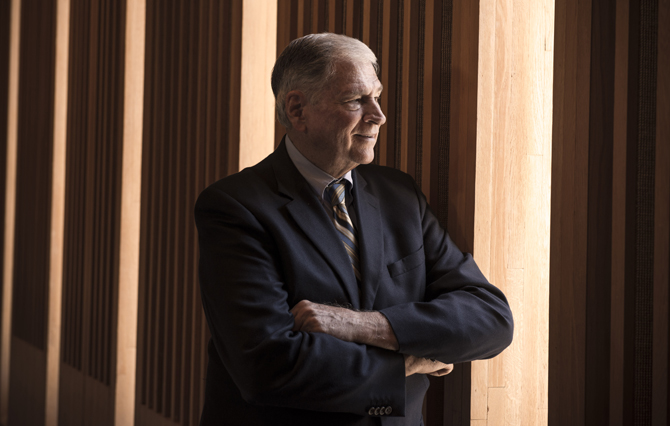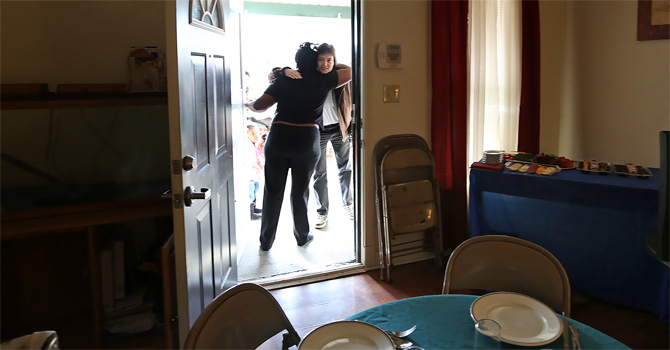For congregations that conduct a fall stewardship campaign -- especially those that have just completed a pledge drive -- the end of the year can seem like a good time to take a break from all the talk about fundraising and stewardship. After all, everyone is tired of discussing money! We got the pledges we needed (or at least enough to feel comfortable that we’re not any worse off than in previous years). And it’s Advent! Christmas is coming, and we all have more important things to focus on.
But be warned. As tempting as it might be, taking a stewardship break means missing a critical opportunity for our congregations. The end of the year can be a powerful moment to celebrate generosity and invite giving. It’s a chance for churches not only to attend to year-end stewardship but also to build momentum for giving year-round.
How do we do this?
In many -- maybe even most -- congregations, stewardship is often relegated to a short fall campaign, in some cases even a single day, “Stewardship Sunday.” Because churches have so many different ministries, all vying for time and attention, fundraising and stewardship can be easily dismissed as a “business operation” of the church, understandably given only limited airtime. This is especially true when leaders don’t particularly enjoy this task that is so essential to congregational life.
Unfortunately, our efforts to make fundraising or stewardship more palatable by limiting “money talk” and rarely asking people directly to give may only make the task harder and more uncomfortable. If we want people to be more generous and to engage with the life of the church through financial giving, we need to talk about it more, not less. Philanthropic research shows that people give because they have been asked; too often, our indirect approach to congregational giving results in fewer and smaller gifts than we might otherwise receive.
For inspiration, look to the nonprofit world, where many organizations make fundraising a year-round activity, with two major campaigns for annual support. The first campaign is the regular fundraising appeal -- a series of letters, emails or phone calls, often organized around a theme, inviting people to contribute to the organization’s annual budget. This can take place any time of year but is usually held in the fall.
Then at the end of the year, the organization again invites donors to give generously to support the mission. This year-end campaign generally takes a different tack, especially in faith-based or social service agencies, appealing more to the spirit of thanksgiving and the joy of giving -- along with a subtle message about the tax benefits of giving before the calendar year ends.
The two-part fundraising effort is best implemented within a broader year-round program of development, one that both celebrates the generosity of donors and connects them to the mission of the organization in a variety of ways.
Congregations have much to learn from the nonprofit world’s integrated approach to fundraising. Asking people to make financial gifts to the church between Thanksgiving and the start of the New Year has both practical and sentimental appeal. It anticipates the common practice of year-end giving for tax deductions and celebrates a season that is already focused on gratitude and gift giving.
Every December, our culture prioritizes charitable giving. When congregations take a break from stewardship during this season, they miss an opportunity to encourage generosity and to invite giving to their mission. At this time of year, people are already primed to express gratitude, weigh the invitations and requests they receive, and give generously.
It only makes sense for the church to celebrate that natural human inclination and to nurture the generosity of members during the holiday season. At the same time, a year-end giving campaign can help lay the groundwork for integrating stewardship and fundraising within the full breadth of the church’s life. Properly executed, stewardship is not compartmentalized in a narrow, once-a-year appeal but embedded within worship, celebration and the liturgical calendar year-round.
When we separate fundraising and development work from other rhythms of church life -- whether out of habit or out of discomfort with talking about money -- we send a strong message to our members. We are telling them that stewardship is less important than our other priorities and is divorced from other aspects of ministry.
Instead, congregational leaders can embrace year-round development strategies, viewing fundraising the same way we do other essential functions like communications, worship planning, teaching, preaching and relationship development. In this way, all our activities, taken together, make the connection for our stakeholders to their own giving and what it means for the church and its mission. Stewardship isn’t a special activity to be completed once a year to meet a particular deadline; it is a part of the practice of faith.
These last few weeks of the calendar year are an ideal time to nurture generosity while it is still front-of-mind for people of faith. During this period, leaders can invite and celebrate giving and shape the practice of fundraising across the rest of the year. When we are attuned to the importance of gratitude, gifts and generosity in our faith tradition, it is easy to make connections to stewardship throughout the year.
An invitation to make a special gift at the end of December, for example, can be followed up with an acknowledgment of the gifts of the Magi at Epiphany. During Lent, we can focus on sufficiency and charity, which then leads to the celebration of abundance and renewal at Easter. When Pentecost arrives, we can consider how the Holy Spirit empowers us to act in the world, and then go on to explore the practice of gratitude during ordinary time … which brings us right back to the traditional fall stewardship season, where the cycle begins anew.
When generosity and stewardship are connected to every season in the liturgical year, fundraising becomes a natural part of church life, tied more to our faith than to our budget. The end of the year is an ideal time to make those connections, as we anticipate and celebrate the gift of God, incarnate in the world.









